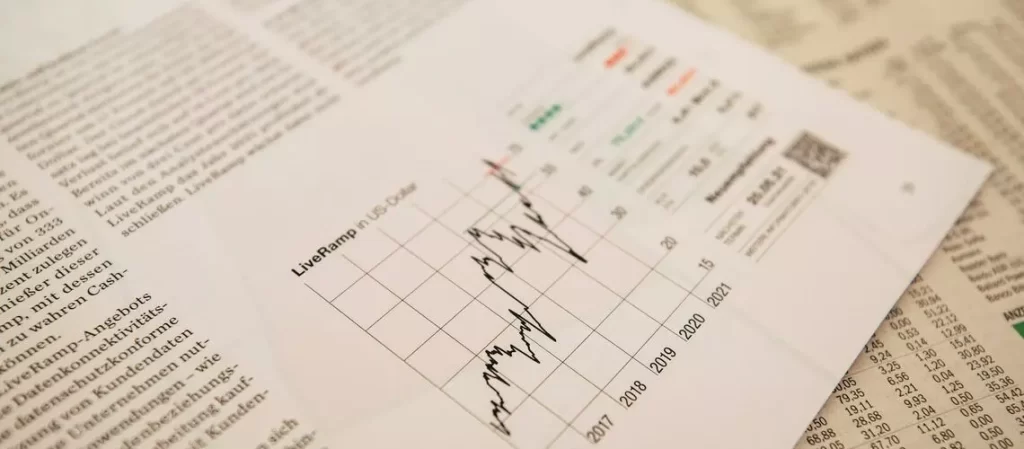Your Comprehensive Source for Australian Property Valuation News
Your Gateway to Australian Property Valuation Insights
Highlights
Breaking News: Stay ahead with real-time updates from the property valuation sector.
Expert Analysis: Delve deep into insightful commentaries from industry leaders.
Resources: For property buyers and investors, we offer a suite of useful resources.
Featured Articles

Expert Insights into Commercial Property Valuation: A Guide for Innovative Investors
Commercial property valuation is a vital component of strategic real estate investment. Innovative investors recognise the need to understand valuation to maximise returns and make data-driven decisions. This guide explores distinct valuation techniques, market factors, and the importance of professional assistance.
Defining Commercial Property Valuation
Commercial property valuation assesses the market value of various real estate assets, including office buildings, shopping centers, and industrial complexes. By analysing financial performance, location advantages, and market conditions, the valuation process provides actionable insights into the property’s worth.
Unique Valuation Approaches for Investors
Selecting the proper valuation methodology depends on the property type, investment goal, and market conditions. Here are essential strategies:
- Discounted Cash Flow (DCF) Analysis: The DCF method estimates the property’s present value based on future cash flows. It considers potential revenue streams over a specified period, discounting them to today’s value using a discount rate that reflects market conditions and risks.
- Comparable Market Analysis (CMA): This method involves comparing the target property with recently sold comparable properties to provide a realistic valuation based on market demand and pricing trends.
- Residual Land Value Method: The residual land value method calculates the land’s worth after deducting estimated construction and development costs from the expected final sale price, providing a unique perspective for developers and investors.
Market Factors Influencing Valuation
Commercial property valuation is influenced by market shifts and global trends. Key factors include:
- Tech Innovation in Real Estate: Technological advancements are changing how commercial real estate is managed and leased, impacting demand and valuation, especially for flexible workspaces.
- Retail Industry Evolution: The shifting consumer landscape due to e-commerce has resulted in fewer traditional retail stores but increased demand for logistics and warehousing properties.
- Workplace Redefinition: Companies are reimagining workplace needs, influencing the valuation of coworking spaces and flexible office environments.
Value of Expert Guidance
A nuanced understanding of commercial property markets is essential for accurate valuation. Leveraging expert advice ensures investors receive realistic insights, helping them build robust strategies. For further exploration, consult commercial property valuation experts.
Conclusion
Innovative investors recognise the importance of comprehensive valuation techniques and expert guidance in driving successful commercial property investments. Understanding methodologies and trends allows them to make strategic decisions and maximise returns. Seek professional valuers to obtain data-backed assessments and navigate the dynamic commercial property landscape effectively.

When to Get a Valuation: Navigating Key Life Events and Transactions
When delving into the realms of buying or selling property, the necessity of an accurate property valuation cannot be understated. For sellers, a professional valuation provides a realistic view of their property’s market worth, ensuring a competitive yet fair listing price. This is particularly vital in a fluctuating market, where setting the right price can significantly influence the speed and success of the sale. On the flip side, buyers benefit from valuations by gaining an objective assessment of a property’s value, aiding in making informed offers and avoiding overpayment.
Property Valuation in Divorce and Inheritance Cases
Divorce Settlements
In the emotionally charged process of divorce, property valuation plays a key role in ensuring a fair distribution of assets. Determining the accurate market value of shared property is essential to arrive at an equitable settlement. Melbourne property valuation provides a neutral and objective basis for negotiations, reducing disputes over property worth.
Inheritance and Estate Planning
Inheritance scenarios often involve transferring property ownership. Whether it’s for estate planning or distribution of assets among heirs, a precise valuation is crucial. It ensures fair division and helps in calculating any applicable inheritance taxes, providing clarity and fairness in what can be a sensitive process.
Valuation for Lending and Refinancing Purposes
Lenders typically require a property valuation when considering mortgage applications or refinancing requests. This assessment assures the lender of the property’s value, which serves as collateral against the loan. It’s a critical step in determining how much can be borrowed, influencing both the lender’s decision and the borrower’s financial planning.
The Impact of Property Valuation on Taxation
Taxation Considerations
When it comes to taxation, particularly capital gains tax, property valuation is essential. It helps in accurately determining the gain or loss on the sale of a property. This is crucial for tax reporting, ensuring compliance and potentially influencing tax liabilities.
Reasons to Value Your Property Periodically
- Market Fluctuations: Staying informed of changes in property value due to market dynamics.
- Insurance Purposes: Ensuring adequate coverage based on the current value of the property.
- Investment Analysis: Assessing property performance and making informed decisions for future investments.
The Broad Spectrum of Property Valuation
In conclusion, there are numerous circumstances, ranging from personal life events to financial and legal requirements, where obtaining a property valuation is not only beneficial but often necessary. Whether it’s for buying or selling, settling divorces, handling inheritances, securing loans, or managing taxes, a professional property valuation offers clarity, fairness, and informed decision-making. Recognising these critical moments to seek a valuation can significantly impact one’s financial and personal journey, making it a pivotal element in property-related matters.

Property Valuation during Market Downturns: An In-Depth Analysis for Australia
Understanding the nuances of property valuation in the context of market downturns is crucial for homeowners, investors, and industry professionals alike. As the Australian real estate landscape navigates through economic fluctuations, grasping the implications of a market slump on property values remains a top priority.
The Impact of Market Downturns on Property Valuation
Market downturns can significantly alter the dynamics of property valuation, a process intrinsically linked to the prevailing economic conditions. In Australia, a recessionary period may dampen buyer sentiment, leading to a reduction in demand and consequently, a decrease in property values.
Critical Factors Influencing Valuations in a Sluggish Economy
Several key factors come into play when evaluating properties during economic downturns:
- Market Sentiment: The collective mood and outlook of buyers and sellers can sway property prices, often leading to conservative valuations during market downturns.
- Economic Indicators: Employment rates, GDP growth, and consumer confidence indexes are vital indicators that influence property valuation.
- Interest Rates: The Reserve Bank of Australia’s interest rate decisions can affect borrowing costs, thus influencing buyer capacity and property valuations.
- Comparative Sales: Valuers heavily rely on recent comparable sales, which in a downturn, may reflect lower property values due to decreased market activity.
Strategies for Accurate Valuation in Depressed Markets
- Detailed Market Analysis: A thorough examination of the current market trends and recent sales data is essential for an accurate valuation.
- Professional Expertise: Engaging with experienced valuers who have weathered different economic cycles can lead to more reliable assessments.
- Adjustment for Economic Climate: Valuers must adjust their methodologies to reflect the realities of a recession, taking into account the increased risk and potential for lower growth.
The Role of Valuers in Assessing Properties During Downturns
Valuers play a pivotal role in providing objective assessments that reflect the true worth of properties during market downturns. It’s their responsibility to offer a realistic view, stripping away the optimistic biases that may have influenced valuations during better economic times.
Adopting a Conservative Approach
In a climate of uncertainty, a conservative approach to property valuation is often adopted. This means:
- Stress Testing Valuations: Ensuring that property values hold up under various negative economic scenarios.
- Risk Assessment: Incorporating a comprehensive risk analysis into the valuation to account for factors like rising unemployment or falling rents.
The Use of Technology in Property Valuation
Advanced valuation models and real-time data analytics have become invaluable tools for valuers. These technologies allow for a more dynamic analysis, taking into account the rapid changes that can occur in market downturns.
Long-Term Prospects for Property Owners
For those looking to hold onto properties long-term, understanding the cyclical nature of real estate markets is essential. Although market downturns may lead to a short-term decrease in property values, historically, the Australian property market has shown resilience, often bouncing back over time.
Investment Strategies During Market Downturns
- Seek Professional Advice: Consulting with financial advisers can provide insight into the best course of action during a downturn.
- Diversification: Diversifying one’s investment portfolio can mitigate the risks associated with a market slump.
- Focus on Fundamentals: Investing in properties with strong fundamental attributes, such as location and infrastructure, can offer better long-term security.
The Silver Lining: Opportunities in a Downturn
While a market downturn may seem daunting, it can also present opportunities. Lower property valuations can offer entry points for new investors or the chance for existing property owners to expand their portfolio at a lower cost, provided they have the financial stability to weather the downturn.
Navigating Market Downturns with Prudent Valuation Practices
In the end, navigating a market downturn in Australia requires a blend of prudent valuation practices, an understanding of the broader economic picture, and a strategic approach to property investment. By recognising the temporary nature of downturns and focusing on the underlying value of properties, stakeholders can make informed decisions that align with their long-term investment goals.

Licensing & Regulation of Property Valuers in Australia
Property valuation plays a crucial role in the real estate industry, providing accurate and reliable assessments of property value. In Sydney, Australia, property valuers are essential in determining fair prices for both buyers and sellers. However, to ensure the quality and credibility of valuations, there is a professional and regulatory framework in place.
The Role of Valuers:
Valuers are trained professionals who assess the value of properties based on various factors such as location, condition, size, and market trends. Their expertise is crucial in determining fair property values, which are essential for accurate pricing, lending decisions, taxation, and other financial purposes.
Professional Standards and Licensing:
To maintain professionalism and ensure the competence of property valuers, licensing and regulation are necessary. The Australian Property Institute (API) is the leading professional body for property valuers in Australia. Valuers must obtain a bachelor’s degree in property or a related field, complete a recognized training program, and meet specific experience requirements before becoming licensed.
Valuer Regulation:
In addition to the professional standards set by the API, valuers in Australia are also regulated by various legislation, including the Real Property Act 1900 and the Valuers Act 2003. These acts outline the legal obligations and responsibilities of valuers, ensuring that they adhere to ethical practices and deliver accurate valuations.
Key Regulatory Bodies:
Several regulatory bodies oversee the licensing and regulation of valuers in Sydney, Australia. These include the New South Wales Valuer General, the Office of the Australian Valuer-General, and the Australian Securities and Investments Commission (ASIC). Each body plays a crucial role in maintaining the integrity of property valuations and protecting the interests of consumers.
Continuing Professional Development:
To ensure the ongoing proficiency of property valuers, continuing professional development (CPD) is mandatory. Valuers are required to participate in regular training programs and stay updated with industry trends, legal requirements, and professional ethics. This requirement ensures that valuers provide accurate valuations and maintain their competence in a fast-evolving real estate market.
Consumer Protection:
The regulatory framework for valuers in Sydney, Australia, is designed to protect consumers and maintain the integrity of property valuations. Through licensing, regulation, and ongoing professional development, valuers are held to high ethical and technical standards. This framework ensures that consumers receive reliable and accurate valuations, which are vital in making informed decisions in the real estate market.
Understanding the professional and regulatory framework of property valuers in Sydney, Australia, is essential for both consumers and industry professionals. With licensing, regulation, and ongoing professional development, valuers uphold high standards of competence and integrity. This ensures that property valuations are accurate, reliable, and trustworthy, contributing to a fair and transparent real estate market. Whether you are buying, selling, or investing, consulting a licensed property valuer provides peace of mind and ensures that you make informed decisions based on reliable valuations.

Rent Price Growth Reflects Increasing Housing Demand Across Australia
An in-depth look at rising rental costs across the country
At ValuNation Australia, we have been closely tracking rental price trends across Australia over the past year. Our analysis shows widespread growth, with over 90% of markets recording increased rents for both houses and units during the 2022-23 financial year. This reflects surging demand in the face of constrained supply, driven by factors like strong migration, investor wariness, and affordability challenges.
In this comprehensive article, we will explore:
- The key drivers pushing rental prices higher
- How different cities and regions are being impacted
- Where rental growth has been most extreme
- What the future outlook suggests
Key Factors Behind Rising Rents
Several influences have aligned to create the perfect conditions for rental price growth over the past year:
migrations boosted renter numbers, especially in inner-cities. 2022 saw record migration into Australia, especially from overseas students and skilled workers. Most new arrivals need rental accommodation, heavily concentrated in metro areas.
Investors retreated as rates rose, choking supply. Higher interest rates from mid-2022 dampened investor appetite. Housing investment loans dropped almost 24% between April 2022 and May 2023. With less investor stock added, supply tightened.
Affordability challenges forced renters to absorb increases. Surging values have stretched budgets over recent years. Renters have shouldered rising rents as they lack alternative options within their price range.
This demand-supply imbalance has seen national rents rise over 13% for houses and 10% for units over the past year. Tight rental conditions are likely to persist in the near term, sustaining upward pressure on rents.
Rental Growth Across Australian Cities
The rental boom has played out differently across Australia according to local economic conditions. Here we summarise key trends:
Adelaide
- 100% of suburbs saw rental increases for houses and units
- Houses rose 8-14% across metro area
- Units soared over 15% in the Inner Southern suburbs
Adelaide’s rental market has lagged the eastern capitals until recently. Strong interstate migration is now driving rents higher as vacancy rates tighten below 1%. More affordable prices offer migrants value compared to Sydney and Melbourne.
Brisbane
- 100% of unit markets recorded rental increases
- Houses rose 11-15% across Inner City and East
- Unit rents jumped over 25% Inner North and 20%+ Inner South
Interstate migration has fuelled Brisbane’s rental boom. Brisbane is Australia’s #1 internal migration destination. With relatively affordable prices, the city appeals to southerners. Near-city suburbs with transport links are seeing huge demand from investors.
Canberra
- Only 2 suburbs saw increased house rents
- 18 unit markets recorded rent decreases
- Vacancy rate remains over 2%, above normal
Canberra is the only capital where rents have stagnated or fallen. Weaker population growth and loose supply (with rentals well above normal) has dampened conditions. Unaffordability also discourages migration from southern capitals.
Darwin
- Recorded universal rental increases for units
- Houses rose over 15% in Northern Suburbs
- Units soared over 20% in Northern Suburbs
Like Perth, Darwin is benefitting from the resources sector boom. With a small population, migration of mining labour has an outsized impact. Remote location limits affordability pressures compared to southern capitals.
Hobart
- Near-universal rental growth for houses and units
- Houses rose 8-12% across metro suburbs
- Units increased 6-10% in Inner and Eastern Suburbs
Tight rental conditions persist in Hobart despite slowing migration. Years of underbuilding and gentrification has eroded rental supply. Though delayed, a pick-up in construction should eventually improve affordability.
Melbourne
- Universal house rental growth across metro
- 2 minor unit market falls only
- Houses rose 6-10% across Inner and Eastern Suburbs
Melbourne’s rental growth has been surprisingly resilient given weaker population growth. A lack of investors and loss of stock to demolitions has tightened supply. Signs of moderation are emerging but require monitoring.
Perth
- Recorded universal rental increases for houses and units
- Houses soared over 15% across metro area
- Units jumped 15-25% in Central and Inner Suburbs
Perth remains Australia’s tightest rental market. Rents are 41% higher than pre-pandemic after surging through the mining revival. With listings 50% below normal, a persistent shortage continues to push rents higher.
Sydney
- Near universal house and unit rental growth
- Houses rose over 15% in Southwest and Northwest
- Units soared over 25% in Inner Suburbs
Sydney’s rental boom is back after the pandemic lull. The inner suburbs are seeing huge demand from students and migrants. Transport links and lifestyle benefits are driving very strong unit rental growth.
Suburbs With Extreme Rental Increases
Certain individual suburbs across Australia recorded particularly extreme rental growth over 2022-23:
Houses:
- Campsie, Sydney (+29.4%)
- Belfield, Sydney (+27.8%)
- Rockingham, Perth (+25.0%)
- Karratha, WA (+24.8%)
- Alkimos, Perth (+22.9%)
Key themes include proximity to migrant-popular areas in Sydney’s Southwest, Perth’s rising southern corridor, and mining regions like Karratha surging on the sector’s strength.
Units:
- Haymarket, Sydney (+32.6%)
- Kingsford, Sydney (+31.7%)
- Arncliffe, Sydney (+30.9%)
- Travancore, Melbourne (+28.9%)
- Eastlakes, Sydney (+27.9%)
The country’s hottest unit rental markets are clustered in inner Sydney, signalling the concentration of rental demand from students and skilled migrants in accessible, high-amenity precincts.
The Outlook for Rents
Looking ahead, we expect rental growth to continue moderating over the rest of 2023. While key demand drivers like migration remain firm, rising rents are stretching tenant budgets. Plus, tighter purchase affordability may renew investor interest after a pause, replenishing rental stock.
However, rental price inflation still has some way to fall before normalising across most cities. Markets like Sydney and Perth especially remain mired in supply-demand imbalances. Any negative shocks to the economy that hamper construction could easily tighten conditions again.
In summary, Australia’s extraordinary rental boom still retains momentum, although the peak has likely passed. Renters in most cities will need to brace for further increases, just not at the extremes of the past year. Careful monitoring of supply and demand shifts will be key to gauging future movements.
At ValuNation Australia, our team will continue providing in-depth rental market research and insights. Please check back regularly for updates as conditions evolve.

Soaring Property Prices in Australia: An In-Depth Analysis by ValuNation Australia
Australia’s property market has experienced rapid growth in recent years, with house prices in some suburbs rising over 14% in just the past 6 months. As a leading property valuation company in Australia, ValuNation has conducted extensive research into this property boom to provide homeowners, investors and policymakers with data-driven insights.
Key Factors Driving Property Price Growth
Several interconnecting factors are fuelling the uptrend in Australian real estate values:
Surging Demand
Demand for housing continues to substantially outstrip supply. Australia’s population grew at a record pace in 2022 from high immigration and natural increase. Most new arrivals require rental accommodation initially, squeezing vacancy rates to all-time lows of 1.5% nationally. Lack of affordable rentals pushes more Australians into home ownership.
Limited Supply
New housing construction has not kept pace with population growth over the past decade. Land release and development approvals remain sluggish. Meanwhile, labour and material constraints make building more expensive. Constrained supply allows sellers to command higher prices.
Low Interest Rates
Despite recent hikes, interest rates remain near historic lows by long-run standards. Cheap debt has enabled buyers to bid up property prices. With more rate rises anticipated, this driver may ease over 2023. But ongoing strong economic growth will prevent major declines.
Investor Activity
Investors are again seeing residential property as an attractive asset class, given still-low rates and large tax concessions like negative gearing. This demand adds to price pressures, especially for cheaper apartments.
Government Incentives
Schemes like HomeBuilder and the First Home Loan Deposit Scheme increased purchasing power for owner-occupiers. This worsened supply-demand imbalances. Stamp duty reform may have a similar impact.
Impacts on Households
For homeowners, rising values build wealth. But big mortgages leave households exposed to higher interest costs. Potential negative equity also looms if prices correct downwards.
Renters have little respite. With vacancy rates tight, rents increased 11.8% nationally over the past year. Lack of affordable rentals hurts lower-income families most.
Higher prices lock more first home buyers out of the market. Deposit requirements become more onerous. Those who do buy must take on larger loans, risking financial stress.
Property Hotspots
According to ValuNation data, suburbs showing the strongest growth recently include:
- Hurlstone Park, Sydney (+14.4%)
- Fairlight, Sydney (+13.4%)
- Smithfield Plains, Adelaide (+13.1%)
- Kings Langley, Sydney (+13.1%)
- Biggenden, Queensland (+13%)
Premium suburbs near Sydney’s CBD are rebounding after dipping last year. Ongoing demand for affordable housing continues to drive growth in Adelaide. Brisbane’s market also remains strong.
Policy Implications
Rapidly rising housing costs have significant economic and social ramifications. Policy reforms are required to improve affordability and market stability.
ValuNation recommends:
- Increasing land releases for new housing
- Streamlining development approvals
- Reforming stamp duties and other taxes
- Boosting social and affordable housing construction
- Curbing tax incentives that distort investment demand
Careful changes are needed to rein in house price growth to sustainable levels. This will require coordinated action across all levels of government. With thoughtful policies, home ownership can remain accessible for future generations of Australians.
Conclusion
Australia’s property boom has delivered big gains for some households but left many struggling with unaffordable prices or rents. ValuNation’s data and insights help inform smarter policies to deliver more equitable and stable housing market outcomes. Although price growth shows signs of moderating, structural undersupply means housing costs are likely to remain high in the absence of major reform.

Property Valuation Trends in Australia in 2023
The Australian property market has seen significant changes over the past year, with most areas experiencing declining prices after a period of huge growth. As we move through 2023, what are the key property valuation trends emerging across the country?
New South Wales
After hitting record highs in early 2022, Sydney property prices have been on a downward trajectory. However, there are signs of a potential recovery.
- The median Sydney house price peaked at $1.32 million in April 2022, but has since fallen to $1.1 million as of July 2023, a decline of 10.5%.
- Apartment prices in Sydney have fared worse, with the median unit price down 13.5% compared to the peak.
- July 2023 saw the fifth consecutive month of rising prices, suggesting Sydney property may be bottoming out.
Factors like affordability constraints, rising interest rates, and increased supply are weighing on the market. However, positive signs like stronger auction clearance rates indicate property valuation trends in Sydney may be stabilising.
Victoria
Melbourne property prices have followed a similar trend to Sydney, but the declines have been less sharp.
- Melbourne’s median house price peaked at $975,000 in March 2022 and now sits at $900,000 as of July 2023, a 7.5% decrease.
- Apartment prices in Melbourne are down 9.5% from their peak.
- There was a slight 0.2% increase in Melbourne prices in July, but it’s unclear if this marks the start of a recovery.
Rising interest rates have dampened demand, but Melbourne’s underlying population growth provides some support for property valuations. Investors are also returning to the market lured by lower prices.
Queensland
Brisbane has been the most resilient capital city market in 2023, with relatively moderate valuation changes.
- Brisbane’s median house price has hovered around $750,000, dipping slightly from its $760,000 peak in February 2022.
- Apartment prices are also only down about 3% from their peak.
- July 2023 saw a slight rise in prices, up 0.5% over the month.
Underlying demand remains strong in Brisbane, boosted by interstate migration from southerners searching for affordability. However, rising supply and interest rates are likely to weigh on price growth going forward.
Western Australia
Perth property prices have reversed after surging in 2021 during the mining boom.
- Perth’s median house price peaked at $725,000 in August 2021 but now sits at $650,000 as of July 2023, a decline of 10%.
- Apartment prices are down even further, with the median unit price falling 13.5% from the peak.
- There was a 1% rise in prices in July, but Perth remains the weakest performing capital city market.
Slowing economic growth and declines in mining investment are weighing on property demand and valuations in Perth. Oversupply is also an issue, especially in the apartment sector.
Other States and Territories
Adelaide, Hobart, and Canberra have all seen moderate peak-to-trough declines of around 8-10% for houses and slightly larger falls for units. Darwin remains subdued, with property prices down around 15% from their 2018 peak.
Broadly, property valuation trends in the smaller cities and regional markets have mirrored the larger state capitals. Oversupply is evident in many parts of the country, constraining price growth.
In summary, property valuation trends in 2023 reflect declines from peak prices in most markets, however signs of stabilisation are emerging. The outlook remains uncertain, with factors like interest rates and supply-demand dynamics shaping valuations.
Valuation Resources
ValuNation Reports: Comprehensive quarterly and annual reports on nationwide valuation trends.
Tools & Calculators: Determine property values with state-of-the-art online tools tailored for the Australian market.
Workshops & Webinars: Join us for educational sessions led by valuation experts.
Subscribe to our Newsletter
About ValuNation Australia
Understand Accurate Property Valuations in Australia
- How property valuations work and what methodology valuers use
- Current property value trends across different Australian states and territories
- Factors that impact property values like market conditions, location, property type etc.
- Differences between council valuations and professional market appraisals
- When you need to get a valuation vs. an appraisal
- Finding and choosing the right valuer
- Valuation reports – what’s included and how to understand them
- Safety checks valuers must conduct on a property
- Disputing or challenging a property valuation
Latest News & Analysis
- Current national and regional property value trends
- Impact of market events like interest rate changes on values
- Forecasts for property prices from leading industry bodies
- Reports, surveys, and new research on the Australian property market
- Commentary from property analysts and valuation experts
- Suburb-level value movements using our customised property valuation map
Valuable Resources for Property Buyers & Investors
- Suburb profile reports with median sale prices, typical land values, and growth history
- Customised property valuation calculators
- Investor guides e.g. how to value properties in different market conditions
- Special reports on topics like tax depreciation schedules, valuations for apartment buildings, commercial valuations etc.
Connect with Valuation Experts
Follow us on our social media channels for more real-time updates and exclusive content:





